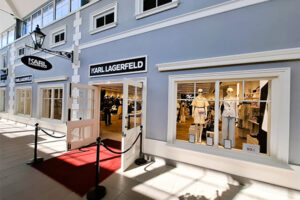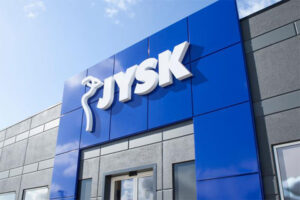BY JONATHAN DOUGHTY
For me, the most fascinating part is the property industry, and specifically shopping centers. In what other industry or sector can we give advice to our clients and see many millions of Euros in value created for them as a direct result of what we say and the advice we give? There is nothing else like it!
It took me a while to understand it and I still need help from my colleagues and friends at our parent company, JLL, to explain things to me, a simple chef who learned to cook way back in the 1970s. But now I understand enough to help our clients all around the world with their foodservice planning and delivery. My team is now global and expert in advising property owners on how to deliver the foodservice mix, the choice of operators, the turnover they will achieve, and the rent they will pay This is all hugely valuable information that, when applied correctly, not only produces a great experience for guests but also a big uplift in property value – a true “win-win.” Looking at the conversion of retail space and “dead” space to food and beverage (F&B), our work is becoming essential to new project plans and existing scheme redevelopments.
FASCINATING NUMBERS
I have also used my passing knowledge of rents, yields, and valuations to calculate some of the returns that we have made for our clients on almost every project we work on. I never used to, but the numbers are fascinating and very compelling indeed. I obviously can’t talk about a specific project by name, but let me give you some of the facts.
We worked on a food court in Poland. It was an existing site and was poor quality, but busy. I am not a huge fan of food courts, but they do have a place in the world and this one had massive opportunities to improve. It had languished for some time and the management was not capitalizing on opportunities that seemed obvious to us.
In simple terms, it suffered from the following problems:
- Not enough seats
- Poor table configurations
- Slow service from tenants
- No smoking areas outside
- Poor choice of Tenants
None of these problems had been identified by the developer or their managing agent as they simply did not know what to look for. Even the number of seats problem had not really been understood as nobody had studied the food court to see how many people DID NOT use it because it was too busy!
LISTENING TO TENANTS
We thus set to work and did our research, watching consumer behaviour, measuring and calculating, and drawing up and designing solutions that could be implemented easily and quickly. We always work hard when we are on site and we very quickly came to understand what the problems were and when we talked to the tenants, they brought a whole list of other things, too!
Three months later, we had finished the work, made our recommendations, and delivered the solutions in theory to our client. The work had cost €40,000 and we had identified a significant trading and rental uplift from delivering the strategy. All we needed to do now was convince the client team to make the changes.
As part of the work we had created a new layout that:
- Increased the capacity of the food court seating
- Improved the configuration of seats to obtain better density
- Reduced the running costs
- Identified two new kiosk locations
- Estimated the potential increase in turnover
- Provided an enhanced rental estimate
One year later, the project was finished and what a difference it had made.
The net impacts were that rent had gone up by €275,000. Turnover was much stronger, tenants were happier and, as I now understand, the value of the property had increased by over €3.5 million. This is with a capital cost of €1.5 million to achieve the changes. These are not big numbers in “property world” but are a clear and definitive statement about how we unlock the value of foodservice in shopping centers. If you take out the capital costs, our fees generated 88 times their cost! That is good value by any measure.
BRINGING EXPERTISE IN F&B EARLIER
I am really keen to explain some more about how clients can also help us unlock more from foodservice in their projects. The first and most important point is to bring in the expertise in F&B earlier, not leave it until everything is set. Getting power, drainage, gas, and other utilities to locations once everything else is fixed makes life really hard.
Another piece of advice that developers should follow is that they should try to cluster the key activities in adjacent locations that extend the day part for the center. By this I mean putting leisure, such as cinema, and foodservice close to each other, with logical entrance and exit points and clear ways of closing off and enhancing the experience around this space when the rest of the center is not open. Sounds easy, doesn’t it? I wish it was, as so many projects we get involved in have not sorted these basics out.
F&B is growing in shopping centers and will continue to grow. We are not close to the point where there is an industry-wide oversupply. Operators want to take more units in the right place with the right customer base. Getting the basics right when starting to plan the project is essential – start early and be realistic about what you want to be, then success will surely follow!
What is your opinion on this topic? Discuss it with us! Send your opinion to opinion@across-magazine.com !






